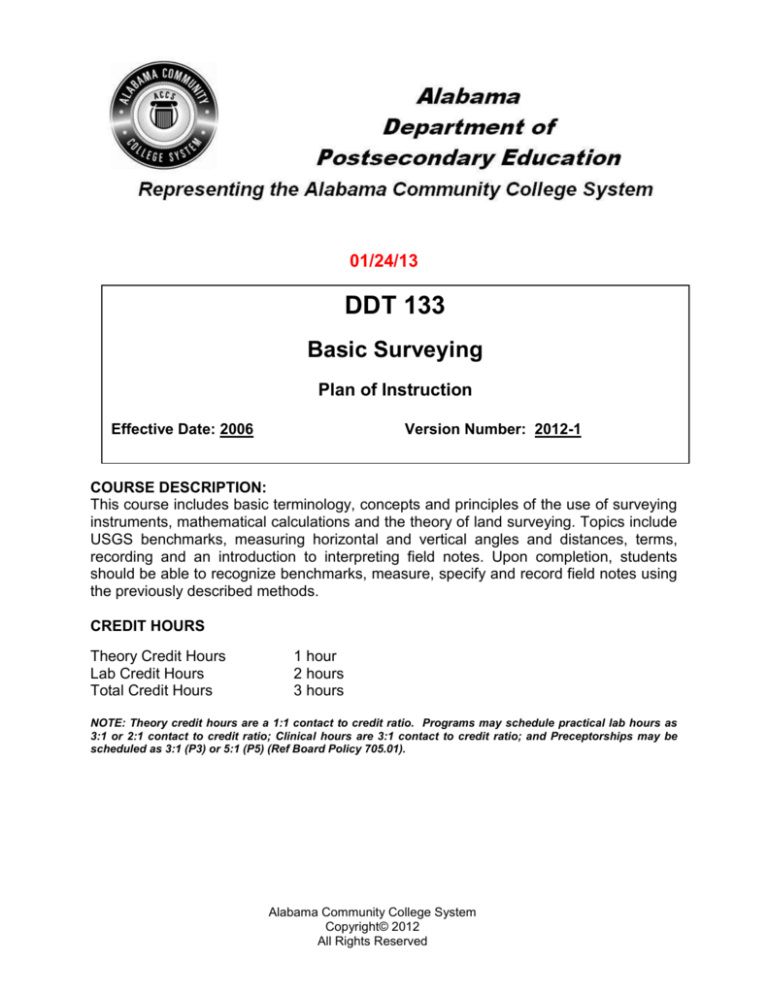
01/24/13
DDT 133
Basic Surveying
Plan of Instruction
Effective Date: 2006
Version Number: 2012-1
COURSE DESCRIPTION:
This course includes basic terminology, concepts and principles of the use of surveying
instruments, mathematical calculations and the theory of land surveying. Topics include
USGS benchmarks, measuring horizontal and vertical angles and distances, terms,
recording and an introduction to interpreting field notes. Upon completion, students
should be able to recognize benchmarks, measure, specify and record field notes using
the previously described methods.
CREDIT HOURS
Theory Credit Hours
Lab Credit Hours
Total Credit Hours
1 hour
2 hours
3 hours
NOTE: Theory credit hours are a 1:1 contact to credit ratio. Programs may schedule practical lab hours as
3:1 or 2:1 contact to credit ratio; Clinical hours are 3:1 contact to credit ratio; and Preceptorships may be
scheduled as 3:1 (P3) or 5:1 (P5) (Ref Board Policy 705.01).
Alabama Community College System
Copyright© 2012
All Rights Reserved
Basic Surveying
DDT 133
PREREQUISITE COURSES
As determined by college.
CO-REQUISITE COURSES
As determined by college.
PROFESSIONAL COMPETENCIES
Identify, research, define and recognize survey terminology, maps and symbol
usages.
Interpret the different types of traverses and surveys.
Differentiate between different types of surveying instruments and demonstrate
the ability to use various types of surveying instruments and equipment.
Construct civil documents from survey data.
INSTRUCTIONAL GOALS
Cognitive – Comprehend principles and concepts related to basic surveying.
Psychomotor – Apply principles of basic surveying.
Affective – Value the importance of adhering to policy and procedures related to
basic surveying.
STUDENT OBJECTIVES
Condition Statement: Unless otherwise indicated, evaluation of student’s attainment
of objectives is based on knowledge gained from this course. Specifications may be in
the form of, but not limited to, cognitive skills diagnostic instruments, manufacturer’s
specifications, technical orders, regulations, national and state codes, certification
agencies, locally developed lab/clinical assignments, or any combination of
specifications.
ACCS Copyright© 2012
All Rights Reserved
2
Basic Surveying
DDT 133
STUDENT LEARNING OUTCOMES
MODULE A – SURVEY TERMINOLOGY, MAPS AND SYMBOL USAGES
PROFESSIONAL COMPETENCIES
A1.0 Identify, research, define and
recognize survey terminology,
maps and symbol usages.
PERFORMANCE OBJECTIVES
A1.1 Identify, interpret and research
basic survey terminology.
A1.2
A1.3
A1.4
Identify mapping legends and
symbols.
Interpret and compare the
different types of survey maps.
1
Identify surveying mistakes,
accuracy and precision.
2
LEARNING OBJECTIVES
A1.1.1
A1.1.2
A1.2.1
A1.2.2
KSA
1
2
KSA
Define terminology.
Relate terminology to applications.
Recognize and name mapping legends and symbols.
Determine usage of symbols.
A1.3.1 Determine usage of various categories of survey mapping types.
A1.4.1 Recognize sources of errors, mistakes, accuracy and precision in
surveying.
MODULE A OUTLINE:
Basic Definitions and Terminology
Types of Map
Numerical Scale, Graphic, Scale Conversion
Mapping Symbols, Drawing Mapping Symbols
Field Notes and Data Collection
Errors, Mistakes, Accuracy and Precision
1
1
1
1
2
2
MODULE B – TRAVERSE AND SURVEY INTERPRETATION
PROFESSIONAL COMPETENCIES
B1.0 Interpret the different types of
traverses and surveys.
PERFORMANCE OBJECTIVES
B1.1 Interpret and distinguish between
the different types of traverses
and surveys.
LEARNING OBJECTIVES
KSA
2
KSA
B1.1.1 Perform calculations from field notes
MODULE B OUTLINE:
2
ACCS Copyright© 2012
All Rights Reserved
3
Basic Surveying
DDT 133
Methods of measuring and computing traverse angles
Angular Measurements and Angle Misclosure
Traversing
Sources of Errors and Mistakes in Traversing and Leveling
Computations
Interpreting Field Notes
Leveling
MODULE C – COMMON SURVEYING INSTRUMENTS AND EQUIPMENT
PROFESSIONAL COMPETENCIES
C1.0 Differentiate between different
types of surveying instruments
and demonstrate the ability to
use various types of surveying
instruments and equipment.
PERFORMANCE OBJECTIVES
C1.1 Identify common types of survey
instruments and equipment.
C1.2 Interpret the functions of various
types of surveying instruments
and equipment.
LEARNING OBJECTIVES
KSA
1
2
KSA
C1.1.1 Recognize and name survey instruments and equipment.
C1.2.1 Relate functions of survey instruments and equipment to surveying
methods and applications.
MODULE C OUTLINE:
Chains
Tapes
Range Poles and Leveling Rods
Spirit Levels
Dumpy Levels
Telescopes
Transits and Transit Levels
Engineer’s Transists
Theodolites
Electronic Theodolites and Total Workstations
Precision and Laser Leveling Techniques
Leveling Log Books and Field Notebooks
1
2
ACCS Copyright© 2012
All Rights Reserved
4
Basic Surveying
DDT 133
MODULE D – BOUNDARY AND PUBLIC LAND SURVEYS
PROFESSIONAL COMPETENCIES
D1.0 Construct civil documents from
survey data.
PERFORMANCE OBJECTIVES
D1.1 Draw boundary survey using
property descriptions.
D1.2 Construct survey using profile
measurement from field notes.
D1.3 Draw plan and profile drawing
using field notes and engineering
sketches
D1.4 Create a subdivision survey from
given engineering sketches and
from written information.
D1.5 Create a highway profile layout
drawing using the point of curve
and point of intersection methods.
LEARNING OBJECTIVES
KSA
2
2
2
2
2
KSA
D1.1.1 Explain the process for construction of boundary map
D1.2.1 Explain the process of constructing a profile of a curved line
D1.3.1 Explain the process of constructing a profile taken from field notes
D1.4.1 Explain the process of drawing a subdivision layout
D1.5.1 Explain the process of drawing a street/highway layout
MODULE D OUTLINE:
Categories of Land Surveys
Methods of Property Descriptions
Metes and Bounds
Lot and Block
Plot Plan
Legal Descriptions and Plot Plans
Plan and Profiles
Township, Sections and Range Lines
Notes, dimensions, and azimuths Plotting Property using Bearing, Distance,
Latitudes and Departures from a given Traverse
2
2
2
2
2
ACCS Copyright© 2012
All Rights Reserved
5
Basic Surveying
DDT 133
LEARNING OUTCOMES TABLE OF SPECIFICATIONS
The table below identifies the percentage of learning objectives for each module.
Instructors should develop sufficient numbers of test items at the appropriate
level of evaluation.
Limited
Knowledge and
Proficiency
KSA
Module A
Module B
Module C
Module D
1
67%
50%
Moderate
Knowledge
and
Proficiency
2
33%
100%
50%
100%
Advanced
Knowledge
and
Proficiency
3
Superior
Knowledge
and
Proficiency
4
The KSA is NOT determined by the verb used in the learning objective, but rather in the context in which
the verb is used and the depth of knowledge and skills required.
Example: Three KSA levels using the same verb (describe):
KSA 1 – Describe three characteristics of metamorphic rocks. (simple recall)
KSA 2 – Describe the difference between metamorphic and igneous rocks. (requires cognitive
processing to determine the differences in the two rock types)
KSA 3 – Describe a model that you might use to represent the relationships that exist within the rock
cycle. (requires deep understanding of rock cycle and a determination of how best to represent it)
ACCS Copyright© 2012
All Rights Reserved
6
Basic Surveying
Indicator Key Terms
1
Limited
Knowledge
and
Proficiency
2
Moderate
Knowledge
and
Proficiency
3
Advanced
Knowledge
and
Proficiency
4
Superior
Knowledge
and
Proficiency
A
Affective
Objective
ACCS Copyright© 2012
All Rights Reserved
DDT 133
Learner’s Knowledge, Skills and Abilities
Description
Recognize basic information about the subject including terms
and nomenclature.
Students must demonstrate ability to recall information such as
facts, terminology or rules related to information previously
taught.
Performs simple parts of the competency. Student requires
close supervision when performing the competency.
Distinguish relationships between general principles and facts.
Adopts prescribed methodologies and concepts.
Students must demonstrate understanding of multiple facts
and principles and their relationships, and differentiate between
elements of information. Students state ideal sequence for
performing task.
Performs most parts of the competency with instructor
assistance as appropriate.
Examines conditions, findings, or other relevant data to select an
appropriate response.
The ability to determine why and when a particular response is
appropriate and predict anticipated outcomes.
Students demonstrate their ability to seek additional information
and incorporate new findings into the conclusion and justify their
answers.
Performs all parts of the competency without instructor
assistance.
Assessing conditions, findings, data, and relevant theory to
formulate appropriate responses and develop procedures for
situation resolution. Involves higher levels of cognitive
reasoning.
Requires students to formulate connections between relevant
ideas and observations.
Students apply judgments to the value of alternatives and select
the most appropriate response.
Can instruct others how to do the competency.
Performs competency quickly and accurately.
Describes learning objectives that emphasize a feeling tone, an
emotion, or a degree of acceptance or rejection.
Objectives vary from simple attention to selected phenomena to
complex but internally consistent qualities of character and
conscience.
Expressed as interests, attitudes, appreciations, values, and
emotional sets or biases.
7



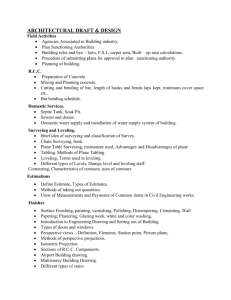
![the registration form [DOC format, 30KB].](http://s3.studylib.net/store/data/007326701_2-7aa061ae2787fe2d09dcfa408150476a-300x300.png)
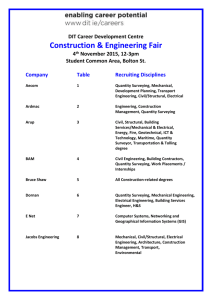
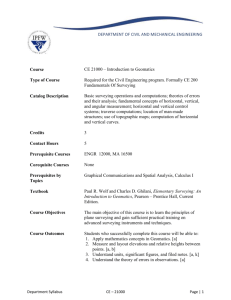
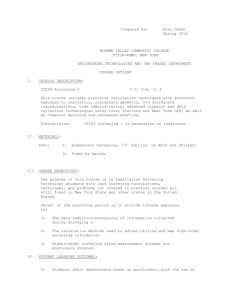
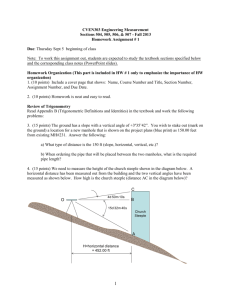
![Elementary Surveying [Opens in New Window]](http://s3.studylib.net/store/data/007206959_1-5874c882e65124652f9ab700273bfabf-300x300.png)